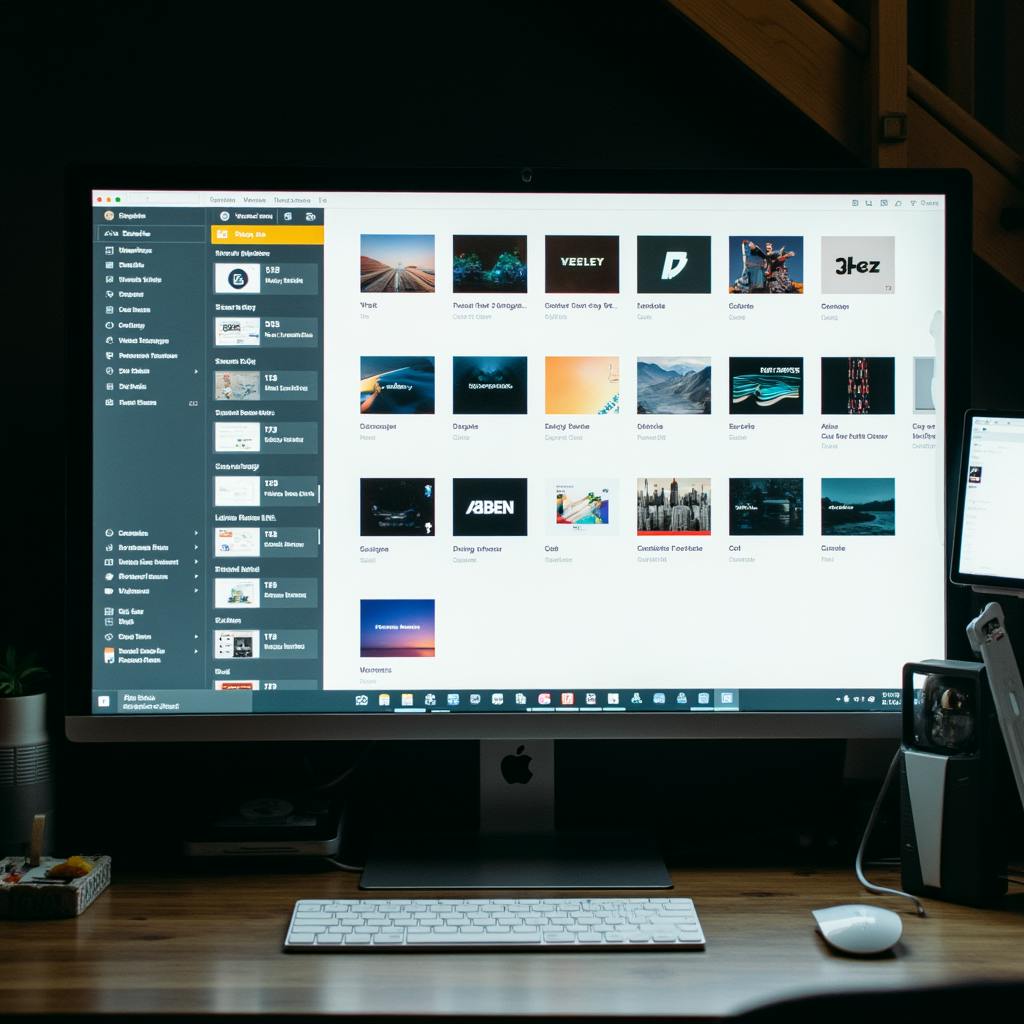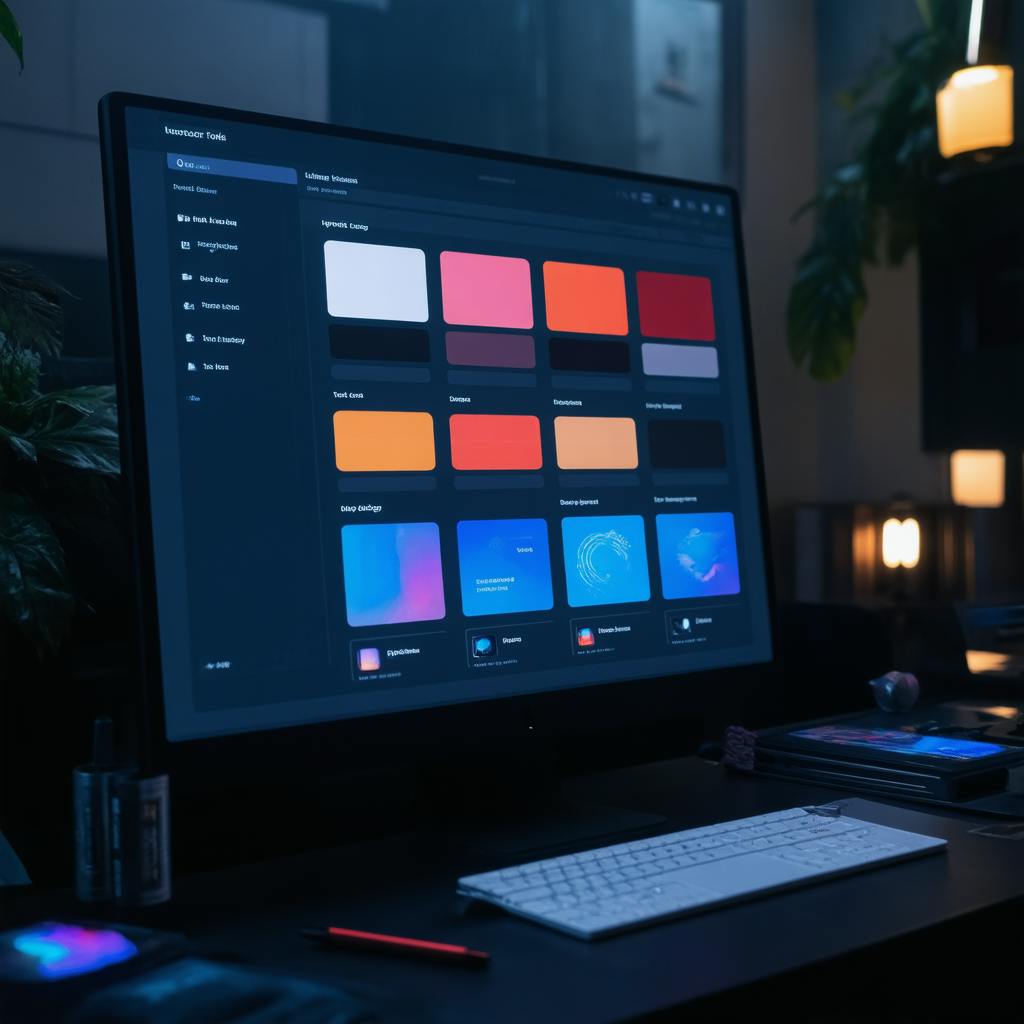Delivering a seamless and consistent user experience is paramount for businesses aiming to foster brand loyalty and user satisfaction. Enter the era of design systems—a strategic, comprehensive solution that orchestrates the design and development processes seamlessly. The best design systems not only offer a structured approach to creating cohesive user interfaces but also significantly streamline collaboration among teams. Prominent examples of these systems, such as Google's Material Design, Salesforce's Lightning Design System, and IBM's Carbon Design System, have set benchmarks for excellence in digital product design.
Understanding Design Systems
A design system, at its core, is a collection of reusable components and guidelines that define the look and feel of a product, serving as the source of truth for design and development teams. It is an amalgamation of UI patterns, design principles, and coding guidelines that ensures all aspects of a digital product are consistent and visually harmonious. These frameworks are indispensable for UX design systems in large-scale projects, where maintaining uniformity across various digital touchpoints is crucial.
The rise of mobile-first design and the growing complexity of user interactions demand more sophisticated approaches to digital product design. Design systems address these challenges, providing a shared vocabulary for designers and developers. They enable faster prototyping, consistent branding, and improved workflow efficiency, ultimately resulting in a more polished end product.
Why Do the Best Design Systems Matter?
Leading industry examples illustrate how design systems revolutionize the way digital products are developed and maintained. Google's Material Design, for instance, offers a comprehensive set of design guidelines driven by a deep understanding of human-computer interaction. This system provides adaptable design elements, animations, and spatial relationships that ensure a delightful user experience across various platforms and devices.
Similarly, Salesforce's Lightning Design System empowers enterprise applications with a cohesive set of design resources, fostering an intuitive user journey. By providing an accessible library of UI components and style guidelines, design and development teams can efficiently create consistent user experiences. IBM's Carbon Design System also exemplifies innovation by offering robust support for accessibility, scalability, and integration with IBM's product ecosystem.

AI made with YK
Key Features of Successful Design Systems
- Scalability: The best design systems are inherently scalable, enabling easy integration of new components while maintaining a cohesive user experience. This flexibility is crucial for companies looking to grow and adapt to evolving market demands.
- Documentation and Guidelines: Comprehensive documentation ensures all team members, regardless of location or focus, adhere to the same design and coding standards. This clarity eliminates ambiguity and minimizes the risk of inconsistencies in the final product.
- Community and Support: A thriving community around a design system can greatly enhance its robustness. Community-driven feedback and resources can support innovation and rapid problem-solving.
- Accessibility: In today's digital landscape, building inclusive products is not just a best practice but a necessity. Leading design systems include built-in accessibility features, enabling products to cater to a diverse user base.
Frequently Asked Questions about Design Systems
What makes a design system effective?
An effective design system is one that is comprehensive, adaptable, and well-documented. It should include scalable components, clear guidelines, and accessibility features to accommodate a wide range of user needs.
How does a design system improve collaboration?
By providing a shared language and resources, design systems streamline communication among cross-functional teams, reducing misinterpretations and ensuring consistent application of design principles.
Are design systems only for large companies?
While large companies were early adopters, design systems have become accessible for organizations of all sizes. Many design systems, like Material Design, offer open-source resources that can be tailored to specific business needs.
FAQ: Best Design Systems for Creating Consistent Digital Products
What are the best design systems for creating consistent digital products?
Creating consistent digital products requires a comprehensive and well-structured design system. Some of the most acclaimed design systems in the industry include:
- Material Design: Developed by Google, Material Design provides guidelines for developing a cohesive look and feel across various digital products. It emphasizes the use of bold colors, responsive animations, and lighting to ensure a streamlined user experience.
- Apple Human Interface Guidelines (HIG): A staple for iOS and macOS app designers, Apple’s HIG offers an extensive set of guiding principles that prioritize clarity and functionality, ensuring apps feel native to Apple’s ecosystem.
- Carbon Design System: Maintained by IBM, the Carbon Design System is celebrated for its open-source nature and robust set of components that help designers create cohesive UIs efficiently.
- Ant Design: A popular design system for enterprise-level applications, Ant Design provides a wide array of components and patterns specifically targeting desktop applications, making it ideal for complex interfaces.
- Atlassian Design System: Developed by Atlassian, creators of Jira and Confluence, this system is crafted for creating intuitive software products, with a focus on ease of collaboration and consistency.
How can design systems improve the consistency of digital products?
Design systems are essential for maintaining consistency across digital products due to several reasons:
- Standardized Components: By using predefined UI components, design systems ensure that elements such as buttons, typography, and forms remain consistent across different parts of a product.
- Reduced Redundancy: Designers and developers can avoid reinventing the wheel with every new project or feature, increasing productivity and maintaining uniformity.
- Scalability: Design systems provide a scalable framework that accommodates future additions and changes without disrupting the existing design language.
- Cross-Team Collaboration: A shared design language enables smoother communication between designers, developers, and stakeholders, aligning everyone with the same goals and standards.
Which design systems are used by top industry professionals in creating digital products?
Top industry professionals often adopt the following design systems for their work:
- Figma’s Design Systems: Figma offers robust tools for creating and managing design systems, making it a favorite among professionals for collaborative design work.
- Sketch Libraries: Sketch is widely used, particularly for its ability to create and maintain shared styles and components, which is invaluable for design system implementation.
- Adobe XD: Professionals using Adobe XD benefit from its integration within Adobe's ecosystem, offering comprehensive tools for prototyping alongside design systems.
- Bootstrap: While primarily a front-end framework, Bootstrap provides a foundation for design consistency with its pre-built components and grid system, widely used by professionals for rapid prototyping.

AI made with YK
Why are these design systems considered the best for digital product creation?
These design systems are considered the best for digital product creation due to the following reasons:
- Comprehensive Documentation: Each of these systems comes with thorough documentation, making it easy for designers and developers to implement and leverage their full capabilities.
- Community Support: With strong communities and continuous updates, these design systems evolve with the industry, ensuring they remain relevant and effective for modern digital product design.
- Flexibility and Customization: While providing a set of rules and components, these systems allow for customization, giving teams the freedom to adapt the system to their specific needs without sacrificing consistency.
- Proven Track Record: Many successful and widely recognized applications use these design systems, proving their effectiveness across a range of industries and use cases.
By choosing the right design system from these top contenders, digital product teams can ensure their projects are not only consistent but also efficient and scalable.
Conclusion
The best design systems, such as Material Design, Lightning Design System, and Carbon Design System, are essential for creating consistent, scalable, and user-friendly digital products. They boost efficiency, improve collaboration, and ensure quality and consistency across every user interaction. As companies continue to innovate and expand their digital offerings, leveraging comprehensive design systems will be pivotal in achieving long-term success and excellence in user experience design.

